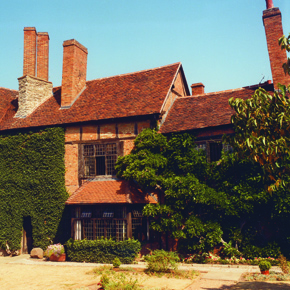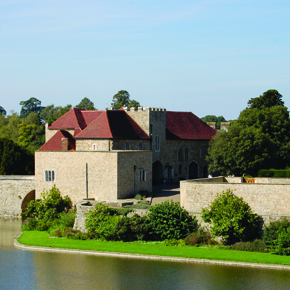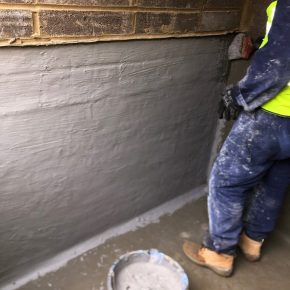
Protecting heritage within the public sector
To address the topic of restoring and repairing heritage roofs within the public sector, Richard Bishop, category marketing manager at Keymer, part of the Wienerberger group, talks to PSB Magazine about the historical DNA of such properties can be effectively maintained…
There is a slight misconception that public sector buildings purely involve ultra modern office buildings and social housing properties. In reality, some of the most historically important buildings in the UK fall within the purview of the public sector – from Windsor Castle to the Houses of Parliament.
With this in mind there are three key pillars to consider when addressing the issues surrounding the roofs that sit upon antique buildings owned by the state. These considerations are material, profile and colour.
Living in a material world
It may seem obvious but when repairing, or indeed replacing a heritage roof, the correct selection of material is paramount. The specification of material is vital for two reasons – the first being that the aesthetic integrity of the building will need to be maintained but beyond that, different materials have inherently different qualities.
Take, for example, a stately home, this may have had a clay roof initially but in theory a stone roof could complement the structure. In this instance it is simply not possible to use stone as on the whole it is heavier than clay meaning the loadbearing structure of the roof would need to be accurately assessed as to whether it could support the load.
The selection of materials also affects the longevity of the roof for several reasons. Say a restoration would not suit an obvious change in aesthetic design – then using the same, original material is of the upmost importance.
There is currently a wide selection of products on the market that have the look of a certain material but are in fact made from something entirely different. Concrete, for example, can be employed to look like a clay tile and when initially installed it may be difficult to tell the difference between it and it’s counterpart.
Given time however, the fact that concrete wears and ages in a very different way to clay will become apparent. Where clay will retain its colour, concrete will not and where clay, in the right conditions, can be dependable to last for up to 100 years, concrete cannot provide the same assurances.
Similarly, the profile of individual tiles need to be in keeping with the roof in question as the wrong specification could, in theory, throw off the entire visage of the building. The third consideration is colour. If a section of a roof is being replaced, the new tiles may stand out somewhat due to their infancy, however, this juxtaposition will be short lived as once time has had its effect upon the tiles, their colour and patina will subtly change until they are indecipherable from the older tiles.
Location, location, location
Public sector heritage sites exist in all elements of society and in different areas with the UK. There can often be fundamental differences found between properties in urban conurbations and those in varying parts of the countryside.
Planning requirements and limitations can be more stringent in historical city areas as buildings need to be in keeping with the local vernacular – therefore should a property, which is set within an historical setting, require maintenance work, it will have to fit within its surroundings.
For example, the work undertaken on Shakespeare’s Birth Place in Stratford upon Avon had to be harmonious with the surrounding area, which set very stringent rules upon colour selection and overall design.
The implications for the public sector
The effort required to protect and maintain heritage roofs is only going to grow since, with the passage of time, more buildings will be added to the list for conservation. 
With this fact in mind the correct specification of product at an early stage in the restoration will save the public sector – be it local authority, quango or Whitehall – a lot of money in man hours and it will also generate savings over the lifespan of the roof.
Yes, handmade clay tiles may seem expensive as an initial cost, however, over a life span of 100+ years their actual value becomes apparent. There are still manufacturers in the UK that can accurately replicate antiquated tiles and profiles using handmade methods similar to those used half a millennia ago, meaning a modern tile can blend in with its older counterparts.
In short, there are hundreds of years of accumulated knowledge and experience, which can be drawn upon to ensure that those heritage buildings receive the care and attention they require.
Read the October issue of PSB Magazine
Visit Supplier's page
Latest news

31st March 2025
Stannah Lifts urges lift owners to prepare for the PSTN switch over
Stannah Lifts, a leading provider of lift solutions, is calling on businesses and facility managers to act now and upgrade their lift communications systems to ensure they are ready for the UK’s new high-speed, GSM digital network.
Posted in Accessibility, Articles, Building Industry News, Building Products & Structures, Building Regulations & Accreditations, Building Services, Facility Management & Building Services, Health & Safety, Information Technology, Interiors, Lifts, Restoration & Refurbishment, Retrofit & Renovation
31st March 2025
Delta: Lift Pit Waterproofing - Type A solutions
Delta Membranes has recently worked on a project whereby the scope was to provide a waterproofing solution to a newly constructed lift pit for a four-storey residential block.
Posted in Articles, Building Industry News, Building Products & Structures, Building Services, Case Studies, Concrete, Cement, Admixtures, Damp & Waterproofing, Facility Management & Building Services, Restoration & Refurbishment, Retrofit & Renovation
31st March 2025
HMG Paints renew partnership with Belle Vue Aces Speedway
HMG Paints has renewed its partnership with Belle Vue Aces for the 2025 season. This year marks a particularly exciting chapter for Belle Vue Speedway, as the club and National Speedway Stadium will host an electrifying double-header of the FIM Speedway Grand Prix in 2025.
Posted in Articles, Building Industry News, Building Products & Structures, Case Studies, Interiors, Paints, Paints, Coatings & Finishes, Posts, Restoration & Refurbishment, Retrofit & Renovation
31st March 2025
Ideal Heating sponsored CIBSE BPA Engineer of the Year announced
As the sponsor of the Engineer of the Year award at the Chartered Institution of Building Services Engineers (CIBSE) Building Performance Awards, Ideal Heating Commercial was delighted to present the award to Volkan Doda, Head of Design Technologies at Atelier Ten.
Posted in Articles, Awards, Building Associations & Institutes, Building Industry Events, Building Industry News, Building Products & Structures, Building Services, Facility Management & Building Services, Heating Systems, Controls and Management, Heating, Ventilation and Air Conditioning - HVAC, Pipes, Pipes & Fittings, Plumbing, Retrofit & Renovation
 Sign up:
Sign up: